hankyoreh
Links to other country sites 다른 나라 사이트 링크
MCST unveils plan to turn Blue House into cultural complex on par with Versailles
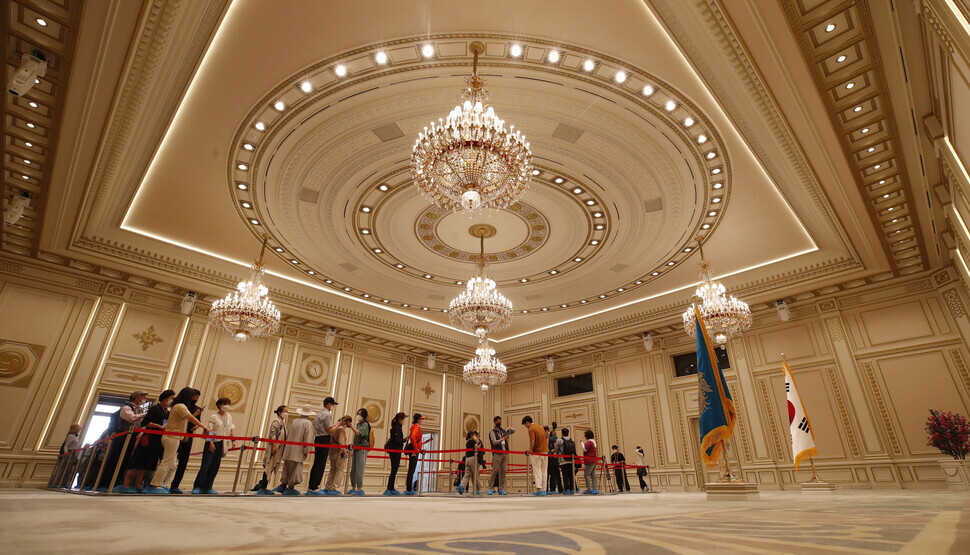
South Korea’s Ministry of Culture, Sports and Tourism has unveiled a blueprint for transforming the Blue House, Korea’s former presidential office and residence, into a high-class art museum and performance venue.
“Minister Park Bo-gyoon’s plan is to turn the Blue House into Korea’s equivalent to the Palace of Versailles,” an official said.
Under that plan, the Blue House’s main building and other important buildings would be turned into a museum dedicated to hosting fine art exhibitions and galleries that would be rented out to the public. The Blue House gardens would serve as a sculpture garden and an amphitheater.
Park briefed President Yoon Suk-yeol on Thursday morning about the ministry’s responsibilities under the new administration, focusing on the blueprint for utilizing the Blue House. The blueprint’s chief goal is to turn the former presidential residence into a living and breathing art complex.
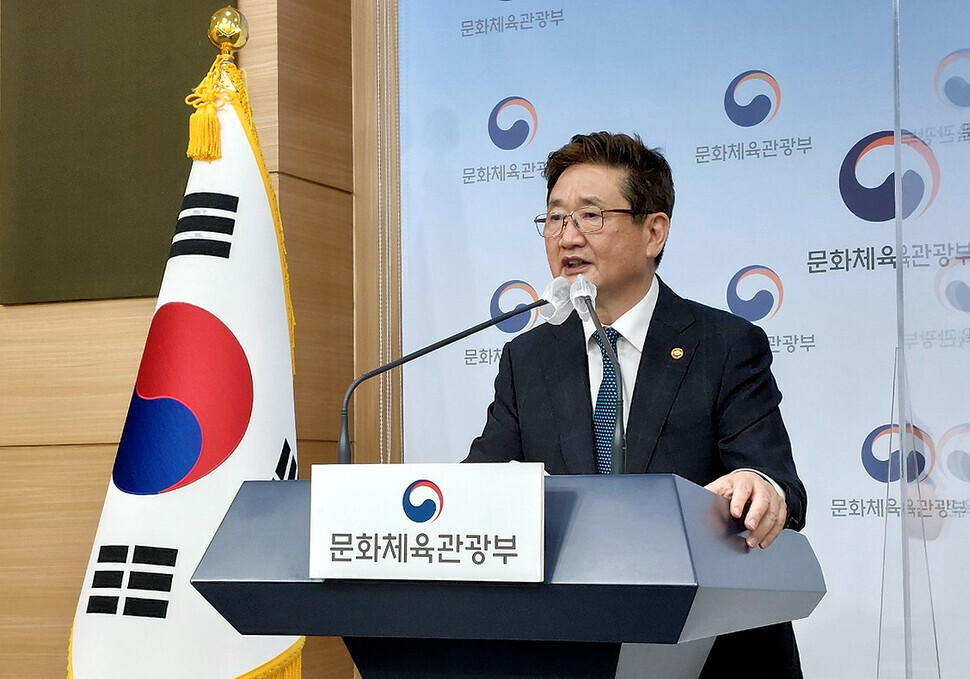
For starters, the Blue House’s main building and residence would be preserved and maintained in their original form, but also reorganized to serve as a permanent space for exhibiting artwork.
The lobby on the first floor and the Sejong, Chungmu and Inwang rooms would be used as exhibition spaces, with the artwork originally commissioned for those rooms remaining in place. (The presidential office and meeting rooms on the second floor would be retained in their current state.)
Artwork would also be installed in parts of the former residence, including the living room and the annex cafeteria. Under the plan, the large lawn in front of the main building would be used as a venue for performances in various genres, including traditional Korean gugak music, classical music and more contemporary pop music. Those performances would be held on major occasions, such as the first anniversary of the Blue House being opened to the public.
“We’re also thinking of turning the residence, the main building and the surrounding area into a venue for storytelling, where people can get a sense not only of the lives of past presidents but of the moments when powerful figures made crucial decisions. We’ve set up an advisory board consisting of scholarly experts on the presidents and some relatives of former presidents, including Park Ji-man, son of former President Park Chung-hee, and Kim Hyun-chul, son of former President Kim Young-sam,” Park Bo-gyoon told reporters Wednesday, the day before briefing the president about the ministry’s plans.
The Blue House guesthouse would be renovated into an exhibition room for modern and contemporary artwork.
“The guesthouse is a postmodern structure that blends elements of Western and Eastern architecture, covering 496 square meters (5,340 sq. ft) of space and with the floors separated by 10 meters. That makes it an appropriate space for exhibiting art of the highest quality. We plan to arrange for some of the finest pieces from Korea and elsewhere to be exhibited here, including the Lee Kun-hee collection, which was donated to the state last year,” a ministry official said.
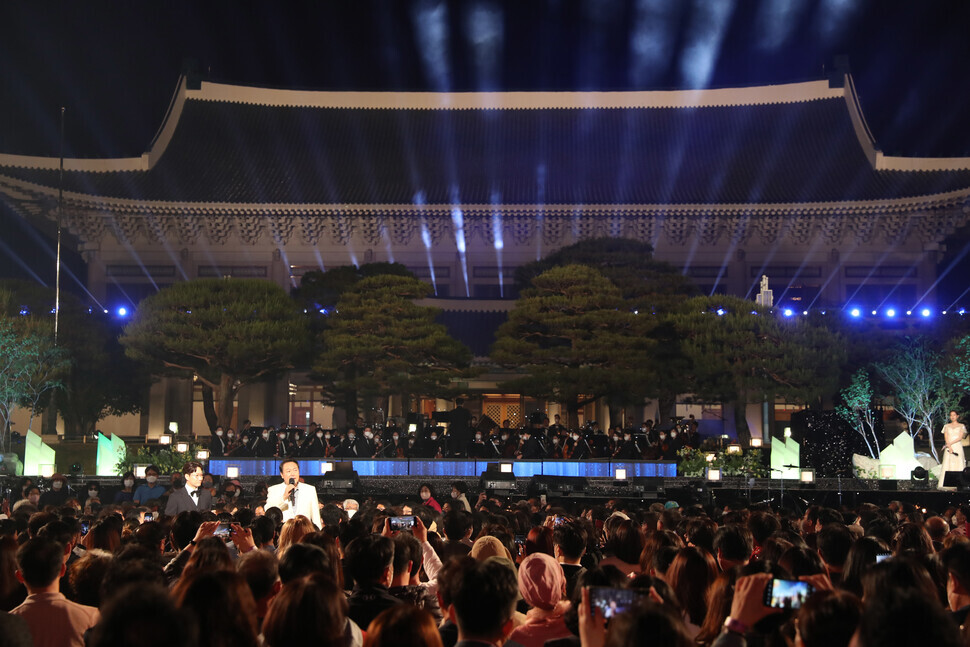
The Blue House press building, known as the Chunchugwan, would serve as a space for communicating with the public. The ministry has decided to use the briefing room on the second floor as a special exhibition space that can be rented out to the public.
In short, the ministry means to go to great lengths to brand the Blue House as Korea’s greatest symbolic asset by combining indoor architecture and outdoor spaces with everything else the Blue House has to offer, including the traces left by presidents of the past, more than 600 pieces of artwork, over 50,000 trees, and historical buildings such as Chimryugak and Ounjeong pavilions, among other cultural heritages.
Following Park’s briefing about the proposal at the new presidential office in Yongsan on Thursday, Yoon instructed the minister to turn the main building, the guesthouse and other spaces at the Blue House into a cultural complex for the public.
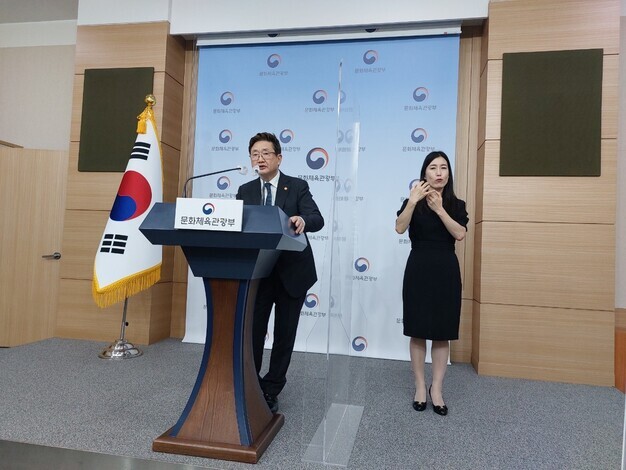
“I hope that not only the pieces already in the Blue House’s collection but many other fine pieces from Korea and other countries will be put on display so they will be easily accessible to the public,” Yoon said.
Lee Jae-myeong, assistant spokesperson for the presidential office, said that Yoon also asked the ministry to have affiliated organizations prioritize purchasing pieces by up-and-coming artists and artists with disabilities and to set aside space for hosting their exhibitions and performances.
After the ministry’s blueprint for the Blue House was unveiled, members of Korea’s cultural establishment expressed concerns that the policy exhibited a bullheaded disregard for the Blue House’s historicity.
“This doesn’t take into account the historical characteristics of the Blue House area, including the secondary palace of the southern capital during the Goryeo dynasty and the secret garden added to Gyeongbok Palace in the 19th century,” remarked one member of the Cultural Heritage Committee.
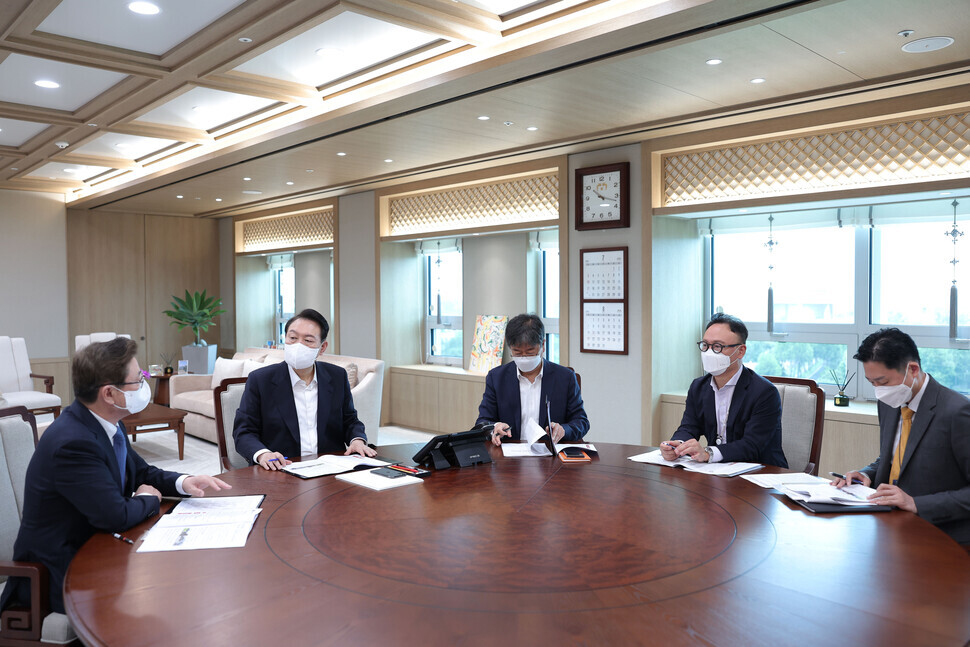
“If the Culture Ministry tries to implement this plan in its current form, with its exclusive focus on the utilization of the Blue House area, we can’t just sit back and let that happen. The subcommittee chairs and the committee members are currently having a very serious discussion about the present situation,” said Jeon Yeong-woo, chair of the Cultural Heritage Committee.
By Roh Hyung-suk, culture correspondent; Bae Ji-hyun, staff reporter
Please direct questions or comments to [english@hani.co.kr]

Editorial・opinion
![[Column] Life on our Trisolaris [Column] Life on our Trisolaris](https://flexible.img.hani.co.kr/flexible/normal/500/300/imgdb/original/2024/0505/4817148682278544.jpg) [Column] Life on our Trisolaris
[Column] Life on our Trisolaris![[Editorial] Penalties for airing allegations against Korea’s first lady endanger free press [Editorial] Penalties for airing allegations against Korea’s first lady endanger free press](https://flexible.img.hani.co.kr/flexible/normal/500/300/imgdb/original/2024/0502/1817146398095106.jpg) [Editorial] Penalties for airing allegations against Korea’s first lady endanger free press
[Editorial] Penalties for airing allegations against Korea’s first lady endanger free press- [Editorial] Yoon must halt procurement of SM-3 interceptor missiles
- [Guest essay] Maybe Korea’s rapid population decline is an opportunity, not a crisis
- [Column] Can Yoon steer diplomacy with Russia, China back on track?
- [Column] Season 2 of special prosecutor probe may be coming to Korea soon
- [Column] Park Geun-hye déjà vu in Yoon Suk-yeol
- [Editorial] New weight of N. Korea’s nuclear threats makes dialogue all the more urgent
- [Guest essay] The real reason Korea’s new right wants to dub Rhee a founding father
- [Column] ‘Choson’: Is it time we start referring to N. Korea in its own terms?
Most viewed articles
- 1New sex-ed guidelines forbid teaching about homosexuality
- 2OECD upgrades Korea’s growth forecast from 2.2% to 2.6%
- 3[Column] Life on our Trisolaris
- 460% of young Koreans see no need to have kids after marriage
- 5Months and months of overdue wages are pushing migrant workers in Korea into debt
- 6[Guest essay] Maybe Korea’s rapid population decline is an opportunity, not a crisis
- 7Presidential office warns of veto in response to opposition passing special counsel probe act
- 8Is Japan about to snatch control of Line messenger from Korea’s Naver?
- 9Bills for Itaewon crush inquiry, special counsel probe into Marine’s death pass National Assembly
- 10Hybe-Ador dispute shines light on pervasive issues behind K-pop’s tidy facade